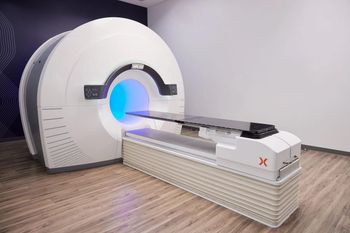
Unique demands in neuroimaging research portend radiology’s future
Biomedical imaging research involves a number of unique requirements that exceed the design capacity of clinical PACS.
Biomedical imaging research involves a number of unique requirements that exceed the design capacity of clinical PACS.
In particular, the quantitative demands of neuroimaging research require extensive custom software support.
"Clinical imaging is mostly about viewing images, so quantitative methods in typical PACS are pretty flimsy," said Daniel S. Marcus, Ph.D., of the radiology department at the Washington University School of Medicine in St. Louis.
Neuroimaging researchers tend to be more integrative, using measures from such diverse fields as genetics, neuropsychology, and behavior, Marcus said.
In a recent paper, Marcus presented neuroimaging research enterprise as a workflow, the principal components of which are data acquisition, data archiving, data processing and analysis, and data utilization (J Digit Imag 2007 Aug 21; [Epub ahead of print]).
The paper also describes a set of open-source applications to support each workflow step and the transition between steps. Since each step in the workflow is modeled as an open-source software component, transition between steps requires communication between components.
"It's unlikely any open-source application is going to cover the entire enterprise, so as you put the constituent pieces together, you consider what step of the workflow this piece covers and how it communicates with the pieces before and after it," Marcus said.
The paper presents a full implementation of neuroimaging research workflow using adapters built on a set of widely used open-source tools - dcm4che, ImageJ, Jakarta, Turbine, Postgresql - as well as a number of open-source tools designed in the WU lab.
Marcus said the aim of the paper is to offer a conceptual framework that facilitates approaches to integrating various open-source tools into a seamless enterprise system and to describe a specific example set of open-source tools within the context of this framework.
He believes the research software he's building will one day translate to quantitative imaging tools for the clinic. A look at what researchers require today is a glimpse at what radiologists and clinicians will be using in the future.
"Today's research is tomorrow's clinical practice," Marcus said.
As discoveries move from the laboratory to the clinic, the future of radiology may look a lot more like the research enterprise, Marcus said, with quantitative approaches becoming more commonplace and nonimaging measures being integrated into the diagnostic process.
"Given the depth of open-source software available in the research domain, one could also imagine that industrial-strength versions of these tools may serve as counterparts in the clinical domain," he said.
Newsletter
Stay at the forefront of radiology with the Diagnostic Imaging newsletter, delivering the latest news, clinical insights, and imaging advancements for today’s radiologists.




























